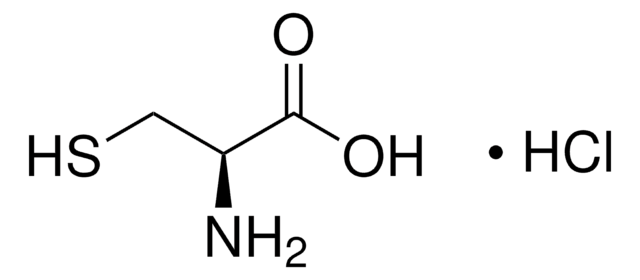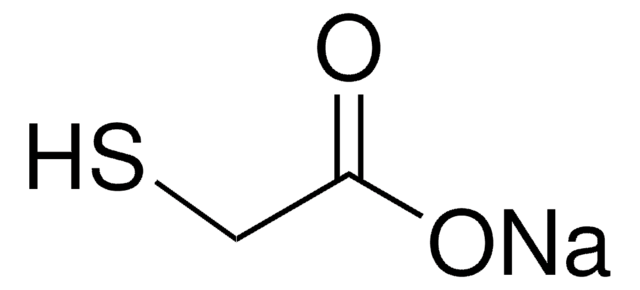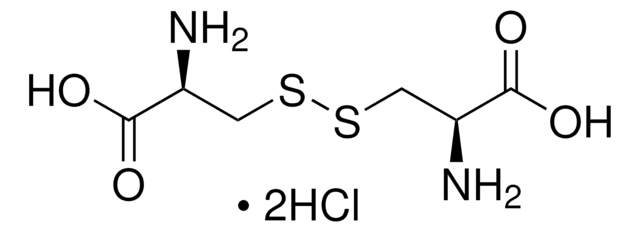C121800
L-Cysteine hydrochloride hydrate
99%, for peptide synthesis
Sinonimo/i:
L-Cysteine·HCl hydrate
About This Item
Prodotti consigliati
Nome del prodotto
L-Cysteine hydrochloride hydrate, 99%
Livello qualitativo
Saggio
99%
Stato
solid
Attività ottica
[α]23/D +5.2°, c = 2 in 5 M HCl
Impiego in reazioni chimiche
reaction type: solution phase peptide synthesis
tecniche
affinity chromatography: suitable
Colore
white
applicazioni
peptide synthesis
Temperatura di conservazione
2-8°C
Stringa SMILE
Cl[H].[H]O[H].N[C@@H](CS)C(O)=O
InChI
1S/C3H7NO2S.ClH.H2O/c4-2(1-7)3(5)6;;/h2,7H,1,4H2,(H,5,6);1H;1H2/t2-;;/m0../s1
QIJRTFXNRTXDIP-JIZZDEOASA-N
Descrizione generale
Applicazioni
Avvertenze
Warning
Indicazioni di pericolo
Consigli di prudenza
Classi di pericolo
Eye Irrit. 2 - Skin Irrit. 2 - STOT SE 3
Organi bersaglio
Respiratory system
Codice della classe di stoccaggio
11 - Combustible Solids
Classe di pericolosità dell'acqua (WGK)
WGK 3
Punto d’infiammabilità (°F)
Not applicable
Punto d’infiammabilità (°C)
Not applicable
Dispositivi di protezione individuale
dust mask type N95 (US), Eyeshields, Gloves
Scegli una delle versioni più recenti:
Possiedi già questo prodotto?
I documenti relativi ai prodotti acquistati recentemente sono disponibili nell’Archivio dei documenti.
I clienti hanno visto anche
Global Trade Item Number
| SKU | GTIN |
|---|---|
| C121800-100G | 4061833461860 |
| C121800-5G | 4061832644776 |
Il team dei nostri ricercatori vanta grande esperienza in tutte le aree della ricerca quali Life Science, scienza dei materiali, sintesi chimica, cromatografia, discipline analitiche, ecc..
Contatta l'Assistenza Tecnica.




